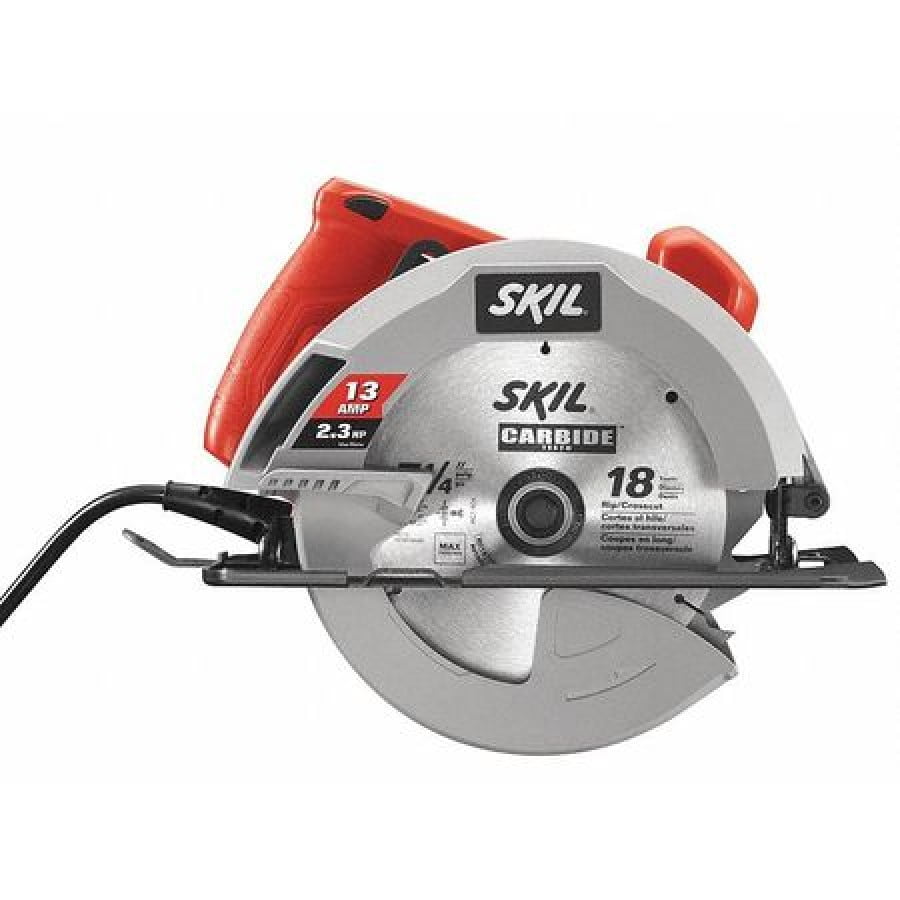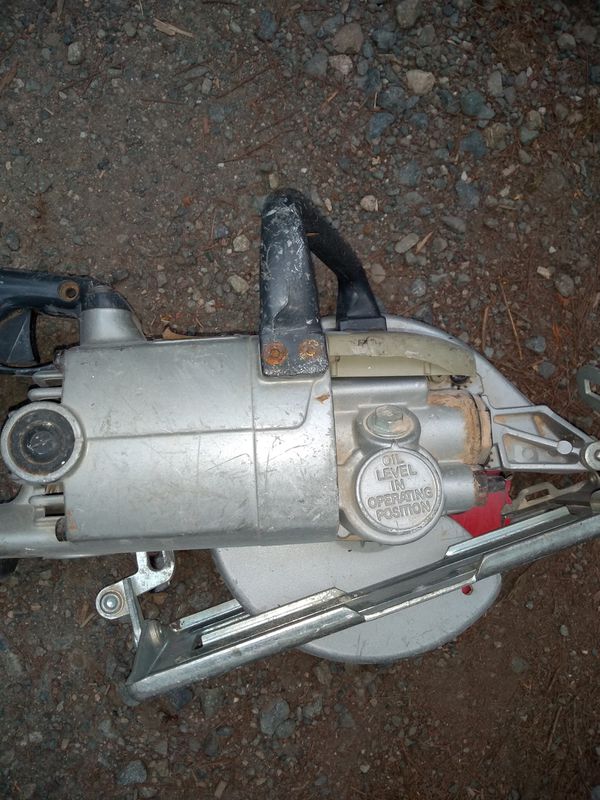

Set the blade so that its bottommost tooth is 1/8 to ¼ inch below the work piece.
#SKILSAW MODEL 77 TYPE 13 MANUAL#
Always wear safety glasses and follow the safety instructions printed in your saw's owner's manual Small Sidewinder Photo by Darrin Haddad Norm's Circular Saw BasicsĬircular saws can be dangerous. On the other hand, a cast metal shoe adds weight to a saw. Cast-metal shoes with raised reinforcing ribs on the top surface, as seen here on a Porter-Cable 347, won't bend like flat aluminum shoes if the saw hits the ground. "No matter what you do, you will drop your saw," warns Tom Silva. Large, smooth-cornered lever locks and full-round knobs that can be tightened down with the whole hand, like this one on the DeWalt 364, make it faster and easier to change the depth of cut and bevel settings than small, hard-to-grasp levers and wing nuts. Sidewinder Photo by Darrin Haddad Features This Porter-Cable 314, with a 4½-inch blade, is the one worm drive on the market - all others are sidewinders. However, cordless models still have limited run times and generate less torque than corded saws.įor finish work or paneling, Norm Abram prefers a small trim saw blades range from 3½ to 412 inches.

This Bosch 1660K sports a 6 ½-inch blade and a 24-volt battery - the largest in its class.

#SKILSAW MODEL 77 TYPE 13 PRO#
For a slight-bodied person, a small pro model like this 7.7-pound Makita 5740NB may be more appropriate than a full-size sidewinder.īattery-driven models have increased in size as their power packs have gained voltage, making them convenient tools out in the field or when the electricity's not on. Weight, balance, and handle size are all key features to consider when choosing a saw that fits you. The helical gearing on higher-end sidewinders, such as this Milwaukee 6390-20, beefs up the torque, making these models worthy competition for worm drives. The motor sits alongside the blade, making for a lighter (11 pounds or less) saw, which is more maneuverable over a long day than a worm drive. As on most full-size worm-drive saws, the blade of this Skil HD77 sits to the motor's left - in easy view for right-handed users. With the handle farther back, a user can better resist kickback and steer the 16-pound saw through long rips. The motor is in line with the blade, delivering enough torque to carve up wet lumber or saw through concrete, which makes a worm drive ideal for framing or major renovation jobs. Worm Drive Photo by Darrin Haddad Saw Styles Either way, a top-of-the-line saw, if treated with care, should still be cutting well when you're ready to hand it down. On the other hand, a good worm-drive saw, Tom's choice for framing because of its high torque output (its beefy spiral gear transfers power to the blade more efficiently), will set you back at least $200. "I'd never buy a saw I didn't have a chance to hold first," he says. TOH master carpenter Norm Abram prefers this tool, noting that buyers should choose one based on balance and maneuverability. Professional-grade sidewinders, which run quieter and cut through dense wood better, cost between $125 and $150. There are many saws on the market under this price, but they're not as powerful, nor are they built for a lifetime's use. A dependable sidewinder - the more compact design, in which the motor sits alongside the blade - starts at around $100. In the end, the most reliable appraisal may be price. Horsepower accounts for torque (rotational force), but not necessarily under working conditions. Amps indicate only the amount of electricity a motor draws, not the power it sends to the blade. However, evaluating power from the motor ratings can be misleading. This not only produces a poor cut, it's dangerous because the blade can climb out of the kerf and push the saw back toward the user. "When the motor slows, the blade heats up and dulls quickly," explains Tom Silva, This Old House general contractor. A good circular saw should have enough raw power to slice through everything from wet lumber to dense hardwood without bogging down.


 0 kommentar(er)
0 kommentar(er)
